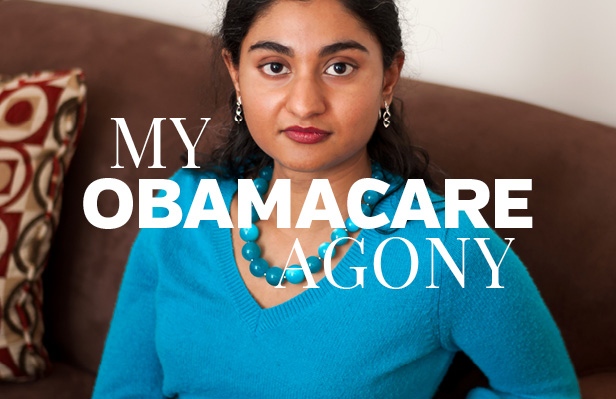Commentary

My Obamacare Agony
Note: This commentary was published at The Hill.com.
I thought I was lucky. The last day to sign up for Obamacare had arrived, and I’d managed to purchase a plan on the national Obamacare exchange.
I battle fibromyalgia, a chronic pain condition that has forced me to spend many days working from home. Treatment requires costly prescriptions and specialists. The prospect of help bearing those expenses filled me with hope. I was just the kind of sickly, long-uninsured person Obamacare was designed to help—or so I thought.
Before one month had gone by, I realized the painful truth. Instead of the promised access to effective, affordable care, I encountered roadblock after roadblock.
It feels like a cruel trick. With the health conditions I face, my $176 monthly premium for a silver exchange plan is like a dream come true. Previously, after multiple denials, I had to make do with a high-deductible, $476 per month plan. But the level of care I received for a lower rate turned out to be a nightmare.
Only one brand-name drug can keep my pain at bay. Under Obamacare, I couldn’t simply refill my regular prescription, though. Instead the drug had to be pre-authorized, and ultimately my exchange plan insurer denied coverage for the drug, which costs $400 per month without insurance or discounts.
Desperate, I accepted my doctor’s offer to experiment with a combination of different drugs that my insurer allows. While they help, they also come with side effects my original medication avoided.
It’s better than nothing. But President Obama didn’t barnstorm around the country selling Obamacare with the promise of coverage that was merely better than nothing.
The president isn’t keeping his promise to provide quality health insurance to people with pre-existing conditions. On top of higher premiums or deductibles, critical drugs may not be covered at all. And the costs patients incur by buying them with cash won’t count against out-of-pocket caps or deductibles.
Information about covered drugs on Obamacare exchange plans is hard to find. In some cases, it doesn’t appear to be available at all. Restrictions on covered drugs are nothing new, but the limits are more widespread in exchange plans because policymakers wanted to keep premiums low.
What good are low premiums if the insurance is paying for nothing?
Don’t get me wrong. I understand that the country desperately needed health care reform—and still does. But I also understand that I’m not alone in struggling under Obamacare. Many Americans sicker than me are doing even worse.
Take Lupus patient Emilie Lamb. Her state-subsidized plan was cancelled because it didn’t provide enough coverage—a “junk plan,” according to President Obama. Lamb’s monthly premium jumped from $52 to $373, forcing her into a second job so she could still see her doctors and buy medicine.
Then there’s fifteen-year-old Michigan twins Austin and Micheala Davert. They suffer from a bone disease called osteogenesis imperfecta. Thanks to Obamacare’s mandates, they lost their primary insurance. After failing to resolve technical issues on Healthcare.gov, their parents fell back on an exchange plan bought directly from an insurer. The premium was comparable but the deductible skyrocketed by nearly $8,000.
“The only other plan that had a lower out of pocket maximum,” said the Daverts’ mother, “was a plan that’s not accepted by their doctors.”
I wish these were isolated examples. Instead, they’re part of a troubling, never-ending pattern. Obamacare’s record of countless extensions, special exemptions, and millions of canceled plans shows that the law is incapable of ensuring that all Americans can access the quality and affordable care they were promised.
Genuine reform probably isn’t going to come from Washington anytime soon. That means looking to our states to deliver real solutions to our health care crisis.
And yes, there are good alternatives out there. For people with pre-existing conditions like me, who couldn’t get individual health insurance, states could expand their high-risk pools. Instead of trying to restructure the entire insurance marketplace, they could give the “uninsurable” an affordable option by subsidizing coverage that’s comparable to private plans.
Unfortunately, that’s not what’s happening here in Pennsylvania. As our state shifts 6,960 people from its high-risk pool to Obamacare, more and more patients will discover how limited their new coverage really is.
Real health care reform could reduce skyrocketing costs on everything from doctor visits to MRIs. It could promote visible pricing, which would allow people to plan and pay for much more of their own routine health care.
That kind of change probably isn’t going to come from Washington anytime soon. That means looking to our states to deliver real solutions to our health care crisis.
Even on my most pain-filled days, I remember there’s still a better way than Obamacare. It’s time to ensure our elected officials do too.
# # #
Priya Abraham is a senior policy analyst for the Commonwealth Foundation (CommonwealthFoundation.org), Pennsylvania’s free market think tank.